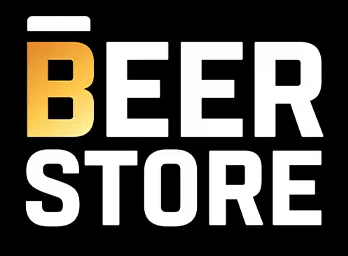We are reprinting Leah’s beer store trilogy together in one beer school article this month.
From Ontario Prohibition to the Rise of the “Big Three”
Prohibition in Canada
The Canada Temperance Act of 1878 granted local governments the option to ban the sale of alcohol. Temperance advocates found the catalyst they needed in the First World War, with prohibition discourse centered around Canadians fulling their patriotic duty through alcoholic abstinence. By 1917, most provinces had banned the sale of alcohol, except for Quebec, the sole Canadian holdout against the temperance movement.
Canada was in a unique position with regard to prohibition, as the production and sale of alcohol was shared by two levels of government. The federal government was in control of regulating production and trade, while provinces were responsible for sales and consumption. Prohibition in Canada was relatively short-lived, opponents arguing that enacting an alcohol ban through plebiscite was an unfair and undemocratic parliamentary practice that violated individual liberties.
Founding Brewers Warehousing Company
Ontario prohibition ended in 1927 with the repeal of the Ontario Temperance Act and the introduction of the Liquor Control Act. Striking a compromise between temperance demands and the unregulated sale of alcohol, the recently re-elected Ontario Conservatives passed The Liquor License Act, regulating the sale, transportation and distribution within the province. As a concession to temperance advocates, public consumption of alcohol was still not permitted, and it was to be sold solely for home consumption. The sale of wine and spirits were controlled exclusively by the newly founded Liquor Control Board, beer, with its lower alcohol content, could be sold by local breweries.
The Ontario Government mandated that beer be sold through a single network of stores, though they opted out of governing this network, as many other provinces had chosen to do. Ontario brewers came together to form the Brewers Warehousing Company, a cooperative enterprise for the shared and efficient wholesale distribution of beer to private retailers. The brewing collective obtained warehouse space and acquired a transport company, and by year’s end, Brewers Warehousing Company Limited had 86 outlets in the province.
E.P. Taylor & Brewing Corporation of Ontario
The Ontario beer industry, and eventually the Canadian beer landscape, was significantly impacted by a young entrepreneur and soon-to-become business tycoon E.P. Taylor. His family owned Ottawa-based Brading Brewery, among one of the breweries to survive prohibition by selling beer to Quebec where sale and consumption of alcohol were still permitted.
Taylor studied the brewing industry and learned that Quebec was dominated by three breweries that had successfully consolidated a number of smaller breweries. Seeing a similar opportunity in Ontario, Taylor, now director of Brading Brewery, decided to seize the moment. He joined forces with British investors, forming Brewing Corporation of Ontario (BCO) in 1930, and started buying up small, local breweries. In its first year, Taylor’s Brewing Corporation acquired 10 breweries accounting for 20% of beer sales in Ontario. By 1937, BCO was renamed Canadian Breweries Ltd. (CBL), and Taylor’s deals extended beyond Ontario to the rest of Canada.
Brewers Retail
In September 1939, Taylor spoke to a meeting of the Brewers Warehousing Company. War had just been declared, which afforded Taylor the perfect opportunity to argue for eliminating unnecessary selling expenses to achieve lower beer prices. Taylor proposed that brewers buy out retailers, leaving all sales and distribution in the hands of the brewers, significantly increasing their profit margins. As a brewers-owned collective, members would see an increase in sales volume and also more taxes to support the war effort. The brewers agreed and in 1940, they bought out the retailers, taking over sales and distribution, changing their name to Brewers Retail Inc.
A Monopoly on Beer
Taylor changed the brewing industry focusing on large-scale brewing, consolidating production and shutting down breweries for greater efficiency. By the 1950s, the company had reduced the number of beer brands from about one hundred to six. Canadian Breweries Limited grew to be the world’s largest brewing company, resulting from the merger of more than 20 other small breweries.
With the overwhelming financial success of Taylor’s business model, Labatt and Molson decided to get into the consolidation game too. By 1965, the “Big Three” – Canadian Breweries, Labatt and Molson – produced nearly 95% of all the beer sold in Canada, with the notable exceptions of the Maritimes and Northern Ontario, as regions that continued to support local breweries. These postwar acquisitions resulted in an oligopoly that completely transformed the market structure of the Canadian brewing industry. The Big Three streamlined operations, producing a small number of national brands with mass appeal, virtually eliminating local and unique craft brews.
Rise of the “Big Three”
Brewers Retail’s three largest shareholders (Canadian Brewers Ltd, Labatt, and Molson), were not only able to gain a stronghold on the Ontario’s beer industry, but came to dominate the national market as well. There were several key factors at play that empowered big breweries to effectively engage in the consolidation of the brewing industry through interprovincial trade barriers, the federal government’s lenient approach to takeovers, as well as provincial authority over retail sales and distribution.
Interprovincial Trade Barriers
At the heart of it, interprovincial trade barriers were designed to be protectionist, meant to prevent smaller breweries from getting edged out by competitors in other provinces. The “big three” breweries viewed these barriers as a golden gate to decentralize production across multiple provinces, thereby reinforcing their position within the national beer market.
After the Second World War, Labatt, Molson and Canadian Breweries Limited engaged in a series of brewery acquisitions, building plants in many provinces across Canada. With a growing national presence, these large corporations were able to curate a small number of brands with mainstream appeal, like Labatt Blue, Molson Canadian and Carling Black Label.
Canadian Breweries Limited & Price Fixing Allegations
Following Canadian Breweries Limited’s (CBL) purchase of Frontenac Brewery in 1951 and National Brewery of Quebec in 1952, an investigation was launched into the company for creating a monopoly within Canada’s beer industry. The Canadian Restrictive Trade Practices Commission charged CBL with forming an illegal combine through a series of mergers, significantly diminishing price competition to the detriment of the public consumer.
The case against CBL was tried in Ontario’s Supreme Court in 1959, where the defense successfully argued that alcohol prices were already extensively regulated through legislation thereby protecting public interest. The notion that provincially controlled beer prices provided a sufficient safeguard against the creation of a monopoly was entirely untrue. As Craig Heron aptly points out in Booze: A Distilled History, “…the breweries jointly set the prices, which the boards then simply rubber-stamped, and use their provincial warehousing organizations to discipline independents and keep out foreign competition…”
The chief justice concluded that CBL’s actions did not violate Canada’s Combines Act, a ruling that would ultimately empower large corporations to continue with expansion plans to further dominated the Canadian beer market.
Creating National Brands & The Stubby Bottle
By 1961, the products of the “Big Three” aligned in that they tasted uncannily similar, and were now being packaged in the same standardized “brown stubby” bottles. The stubby bottle, unique to Canada’s beer market, helped to streamline production, as well as providing more effective storage and easier distribution.
In 1969, Canadian Breweries Limited was renamed Carling O’Keefe, after it was purchased by a subsidiary of Rothman’s. With deep pockets for promotional spending, the Big Three were able to create national brands backed by high-level and sophisticated advertising campaigns.
At its peak in the late 1970s and early ’80s, Labatt, Molson and Carling O’Keefe controlled well over 90 per cent of the Canadian beer market. In Ontario, the Brewer’s Retail (renamed the Beer Store in 1985) was owned almost exclusively by the same “Big Three”, who controlled virtually all of warehousing, sales and distribution of beer throughout the province. Independent brewers, fed up with the monotony and near monopoly of national beer sales, began to rise up, brewing beer with quality ingredients, character and real flavour.
A Sweet Secret Deal – 2000 Framework Agreement
In 2014, Martin Regg Cohn, a political columnist for the Toronto Star, revealed the secret sweetheart deal reached between privately-owned The Beer Store (TBS) and the crown-operated LCBO. The once-clandestine deal signed June 1, 2000, reveals an agreement of non-competition, to protect The Beer Store’s retail monopoly. As part of the agreement, the LCBO was prohibited from selling beer to bars and restaurants if the same product was available through TBS.
With virtually no competition on licensee beer sales, The Beer Store’s big brewers were given license to flex their market muscle, often setting prices higher than prices charged at their retail stores. The LCBO was only permitted to sell beer in singles or 6-packs, denying consumers the cost saving on bulk purchases of 12 and 24-packs that account for significant portion of retail beer sales.
Why would the LCBO enter an agreement that so clearly benefitted a privately-owned business over a publicly-funded one? According to former CEO and LCBO chair Andy Brandt, the Ontario Conservatives led by Mike Harris, were under intense pressure from the Beer Store, who had made generous political contributions as well as donating a few complimentary kegs.
Master Framework Agreement
In 2015, the Ontario Liberals, led by Kathleen Wynne, entered into a 10-year agreement with the Beer Store to address the unfair monopoly and lack of competition in the alcohol marketplace. Ontario Beer sales were expanded to include 450 grocery stores across the province, with the LCBO as its exclusive wholesaler. Under this new contract, The Beer Store agreed to spend $100 million to update their stores, widely criticized for being outdated.
Prior to 2015, customers had no options for browsing, making their selections from a posted list of beer labels, where big brewers could easily market their own brands, highlighting their preferred choices through top 10 lists, ice cold summer faves, etc. As part of the new agreement, The Beer Store was required to enhance the overall customer experience by offering open concept/self-serve at its new locations, giving visibility to all available beer brands.
In spite of the new agreement, The Beer Store retained its exclusive wholesaling rights on beer sales to bars and restaurants. The sale of 12 and 24 packs of beer, accounting for vast majority of retail beer sales, largely remained in The Beer’s Store’s control, with 60 LCBOs, roughly 9% of stores, now permitted to sell 12 packs.
End of the MFA & Early Implementation Agreement
In May 2024, Doug Ford announced the end of the MFA contract, originally set to expire January 1, 2026, hastily fast tracking the expansion of alcohol sales to grocery stores and corner stores across Ontario.
Although many Ontarians support the move to a more open marketplace, the penalty for premature termination is projected to cost Ontario taxpayers an additional $612 million, of which $225 million to be paid to the Beer Store.
The massive TBS payout is, in part, intended to provide industry support for its retail outlets to remain open through 2025. As part of an interim agreement, The Beer Store will keep 386 outlets open until July 1, 2025 and 300 through the end of the year. Beyond 2025, there’s no mandate to keep stores open.
Expansion of Alcohol Marketplace in Ontario
From October 31, 2024, big box, grocery and convenience stores across the province are allowed to sell beer, cider, wine and ready-to-drink alcoholic beverages. During the transition period through 2025, The Beer Store will continue its role as exclusive wholesaler of beer to bars, restaurants and southern LCBO convenience outlets, while the LCBO will be the wholesaler to all new retailers. Beginning in 2026, the LCBO will become the exclusive wholesaler for alcoholic beverages to all retailers, bars and restaurants across Ontario.
Provincial government estimates suggest that there could be over 8,500 retail outlets selling alcohol within the new open market system. According a 2024 report from Ontario’s Ministry of Finance, the Beer Store’s share in Ontario’s alcohol market is expected to plunge from 41.1% in 2024, to 15% by 2026-27, while LCBO share is forecasted to grow to 77.1% from 51.2%, largely as a result of its growing role as a wholesaler to retail outlets.
While The Beer Store’s retail presence is rapidly declining, there are a couple of key areas where the company may continue to thrive. Until at least 2031, TBS will remain as the primary distributor of beer to all retailers, restaurants and bars – a well-established system run through a vast network of distribution centers. In addition to their distribution agreement, TBS has also renewed a 5-year contract with Ontario Deposit Return Program (ODRP) to manage the collection and recycling of all alcohol containers. ODRP is a significant source of TBS revenue and is a key initiative for waste reduction in Ontario.
The story of The Beer Store is still unfolding. The beer landscape has changed considerably since the 1980s, and the Beer Store is set to close many of its locations over the next several years. Will the future of The Beer Store lie in its retail distribution and recycling initiatives? Only time will tell.
(Leah is a Toronto based freelance writer as well as the Beer Boss and a server at C’est What)


